Laptop Mag Verdict
The Xiaomi 12 takes the fight to the Samsung Galaxy S22 with a great compact flagship that brings big specs, a gorgeous display and a great camera together at a competitive price.
Pros
- +
Powerful Snapdragon 8 Gen 1
- +
Gorgeous AMOLED screen
- +
Great camera system
- +
Sleek and stylish
- +
Competitive pricing
Cons
- -
No headphone jack
- -
Curved display victim to accidental taps
- -
Battery life not as long as we’d like
- -
Overheating issues under stress
Why you can trust Laptop Mag
Let’s be honest, the Xiaomi 12 has one target in its sights: the Samsung Galaxy S22.
Xiaomi has brought upgraded internals in apocketable form factor that match the S22, all at a competitive price that shaved $50 off what you’d be paying for Samsung’s latest Android flagship.
But to take on Android’s mainstream titan, you need to have a strong all-rounder that packs plenty of power, a cracking camera, top notch software and great battery life.
Does Xiaomi stick the landing? Let’s find out.
Xiaomi 12: Price and configurations
The Xiaomi 12 is coming in hot with three finishes: gray, blue or purple (we reviewed the last one). Once you’ve picked a color, you can choose either the baseline model with 8GB of RAM and 128GB of storage, the same RAM and 256GB of storage or 12GB of RAM with 256GB of storage.
Prices start at $749, which is $50 less than both the Samsung Galaxy S22 and iPhone 13. This is a ripe price range for good phones, so Xiaomi better bring its A-game.
Xiaomi 12: Design

Xiaomi’s A-game starts with a familiar and sleek design. The metallic finish on the plastic back provides a unique personality to the Xiaomi 12, along with the premium, rigid feel of the aluminum bumper around the edge of this glass/plastic sandwich.
Sign up to receive The Snapshot, a free special dispatch from Laptop Mag, in your inbox.
I would have preferred a flat glass display on the front rather than the curved edges, as the Xiaomi 12 does fall victim to unintended touches because of it, and the matte plastic back does feel kind of cheap. All in all, it’s quite the looker that comes with a free case in the box for those who are prone to being a little clumsy.
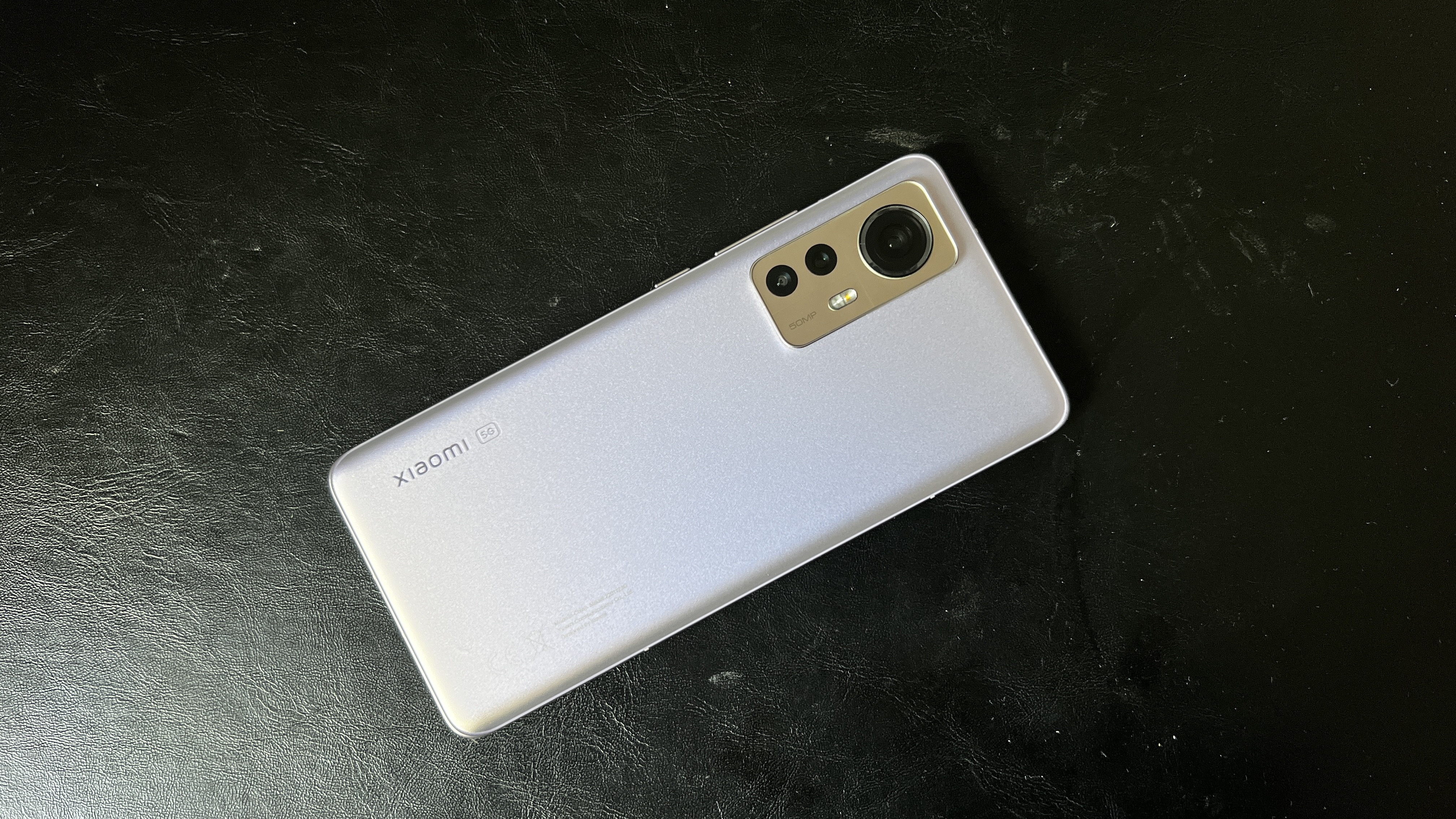
Breaking down the specifics, at 6.0 x 2.8 x 0.3 inches and a weight of 6.3 ounces, the Xiaomi 12 is a decently compact size for most hands. However, it does come in a little larger and heavier than the Samsung Galaxy S22 (5.75 x 2.8 x 0.3 inches, 5.9 ounces) and iPhone 13 (5.8 x 2.8 x 0.3 inches, 6.1 ounces).
In terms of feel in the hand, the iPhone 13 and Galaxy S22’s glass and aluminum constructions have a more premium touch than the Xiaomi 12, but not to the point that this is a dealbreaker. You’re still getting solid build quality and a stylish look.
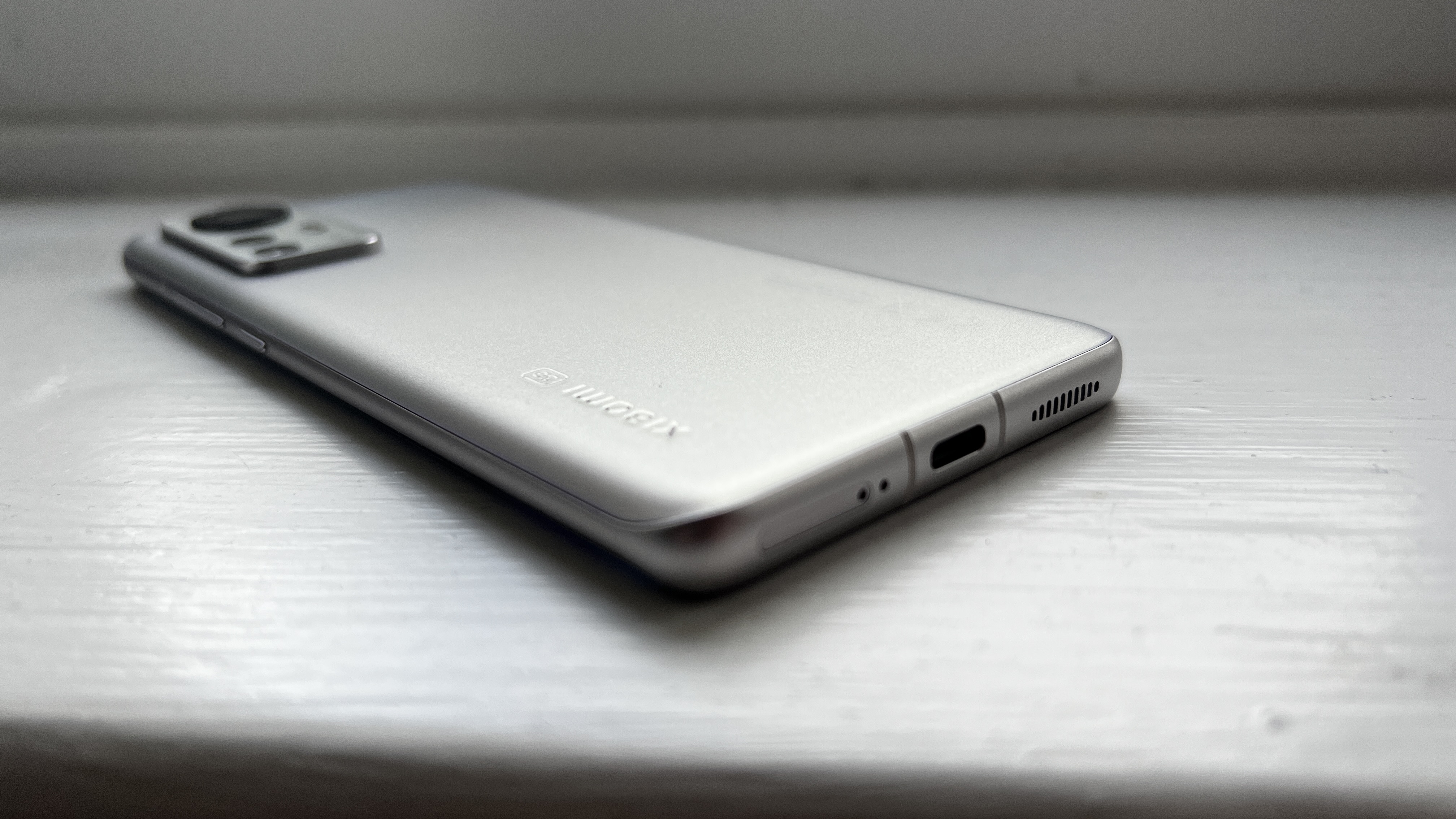
Xiaomi 12: Display
Turn it on and the 6.28-inch AMOLED display comes to life. Much like the Xiaomi 11T Pro before it, this panel packs a 2400 x 1080-pixel resolution with a 120Hz refresh rate (and a 480Hz touch sampling rate), with the additional benefits of a (claimed) 1,100-nit peak brightness, Dolby Vision, HDR 10+ support, TrueColor calibration and a DisplayMate A+ grade.
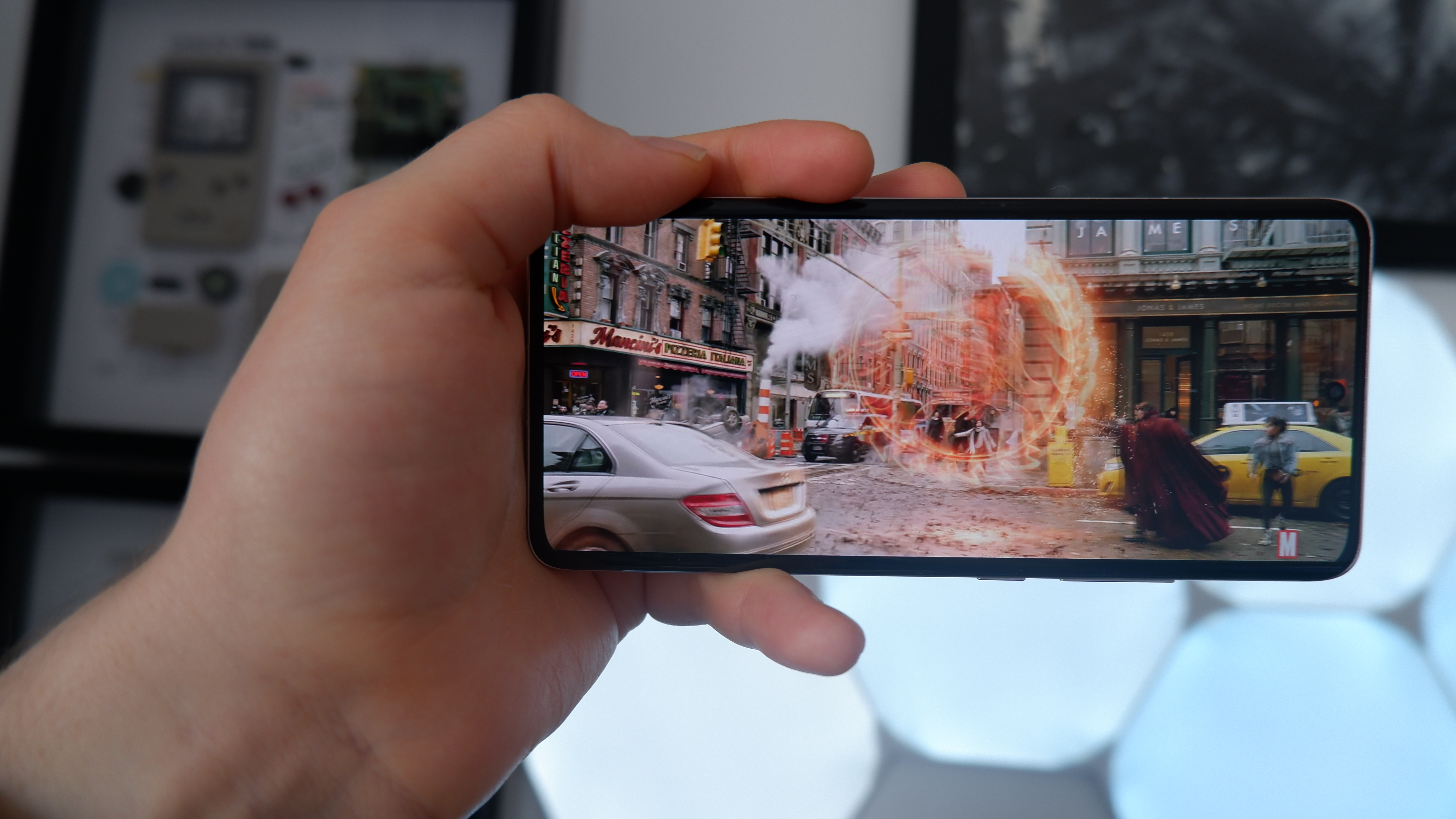
The end result is a gorgeous color-accurate screen that is a joy to watch and do things on. Watching the Doctor Strange in the Multiverse of Madness trailer really shows off the HDR and contrast ratio, as spells glow off the screen with luminosity and every scene has an impressive depth to it.
This is a larger OLED screen compared to its competitors, but the 6.1-inch iPhone 13 and 6.1-inch Galaxy S22 have slightly higher resolutions.While the iPhone 13 is limited to a 60Hz refresh rate, the S22 gets the same 120Hz treatment as the Xiaomi 12.
Xiaomi 12: Audio
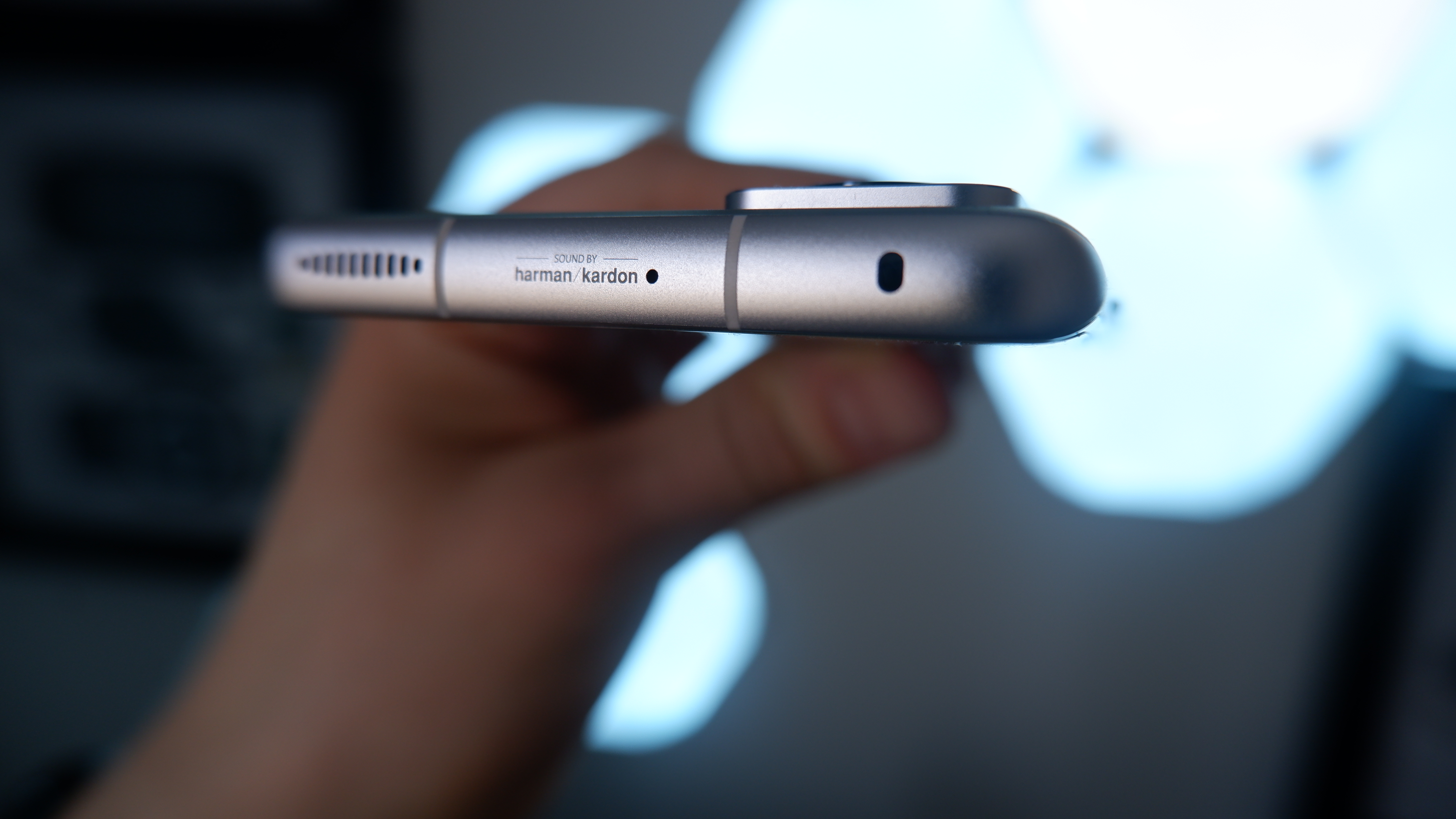
The lack of a headphone jack is disappointing, but not surprising. However, Xiaomi makes up for this with powerful stereo speakers tuned by Harman Kardon. These pair with the gorgeously vivid AMOLED display to make a formidable entertainment experience.
Much like the 11T Pro before it, this partnership makes for a strong sound output. Four Year Strong’s cover of “Bittersweet Symphony” once again sounds awesome, with subtle details in the quiet parts being highlighted nicely, while handling the onslaught of the thrashing loud chorus sections without distortion.
Xiaomi 12: Performance
The Xiaomi 12 is packing some serious heat with the Snapdragon 8 Gen 1 chipset and up to 12GB RAM. When put to the test in Geekbench 5, the Xiaomi 12 hit a multi-core score of 3,580, which pips the similarly-specced Samsung Galaxy S22 to the post (Snapdragon 8 Gen 1, 3,341), but naturally falls behind the iPhone 13 (A15 Bionic, 4,436).
As for graphics, Xiaomi’s powerhouse held its own in 3DMark’s WildLife test with an average frame rate of 58.7 fps — beating out the iPhone 13 (55.9 fps) and falling the tiniest bit short of the Galaxy S22 (60 fps).
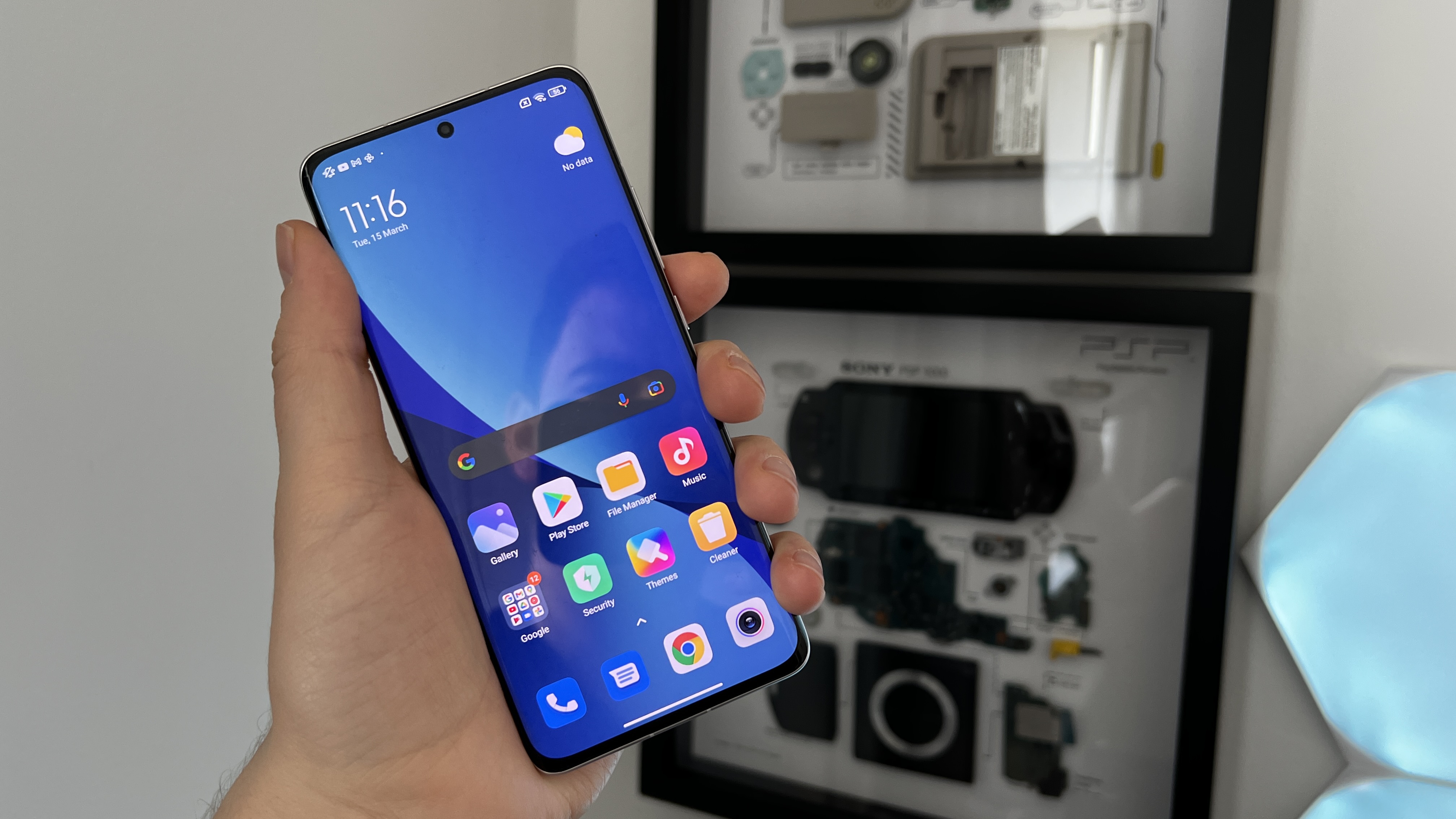
Of course, these numbers only tell half the story. In real-world use, I didn’t come across a single moment of stuttering, no matter how many CPU-intensive processes I threw at it. Games like Fortnite and Call Of Duty: Mobile look and perform great here, while multitasking between said games, Adobe’s Photoshop mobile, TikTok and more didn’t slow things down at all.
One thing I did come across in WildLife Stress testing is overheating issues that caused the phone to force quit mid-test. Whether that is a cause for concern for you or not comes with a simple question of whether you will be hardcore gaming for hours on this thing.

If you are, maybe look towards the RedMagic 7. But most of you will be more than happy with the performance on offer here, and while you can force it to overheat with lab benchmarking, the large vapor chamber is going to easily handle whatever workload you throw at it.
Xiaomi 12: Battery Life & Charging
With a 4,500mAh battery inside, the Xiaomi 12 cuts back significantly from the 5,000mAh found in the Xiaomi 11T and 11T Pro, which when paired with the power-hungry Snapdragon 8 Gen 1 processor leads to some stamina worries.
Whereas the 11T hit 15% on a typical day of usage (including a few hours of web browsing, listening to podcasts and Spotify all day, plenty of social media use, photography, gaming, and watching YouTube videos in the evening), I was left with a flat battery after around 10 hours.
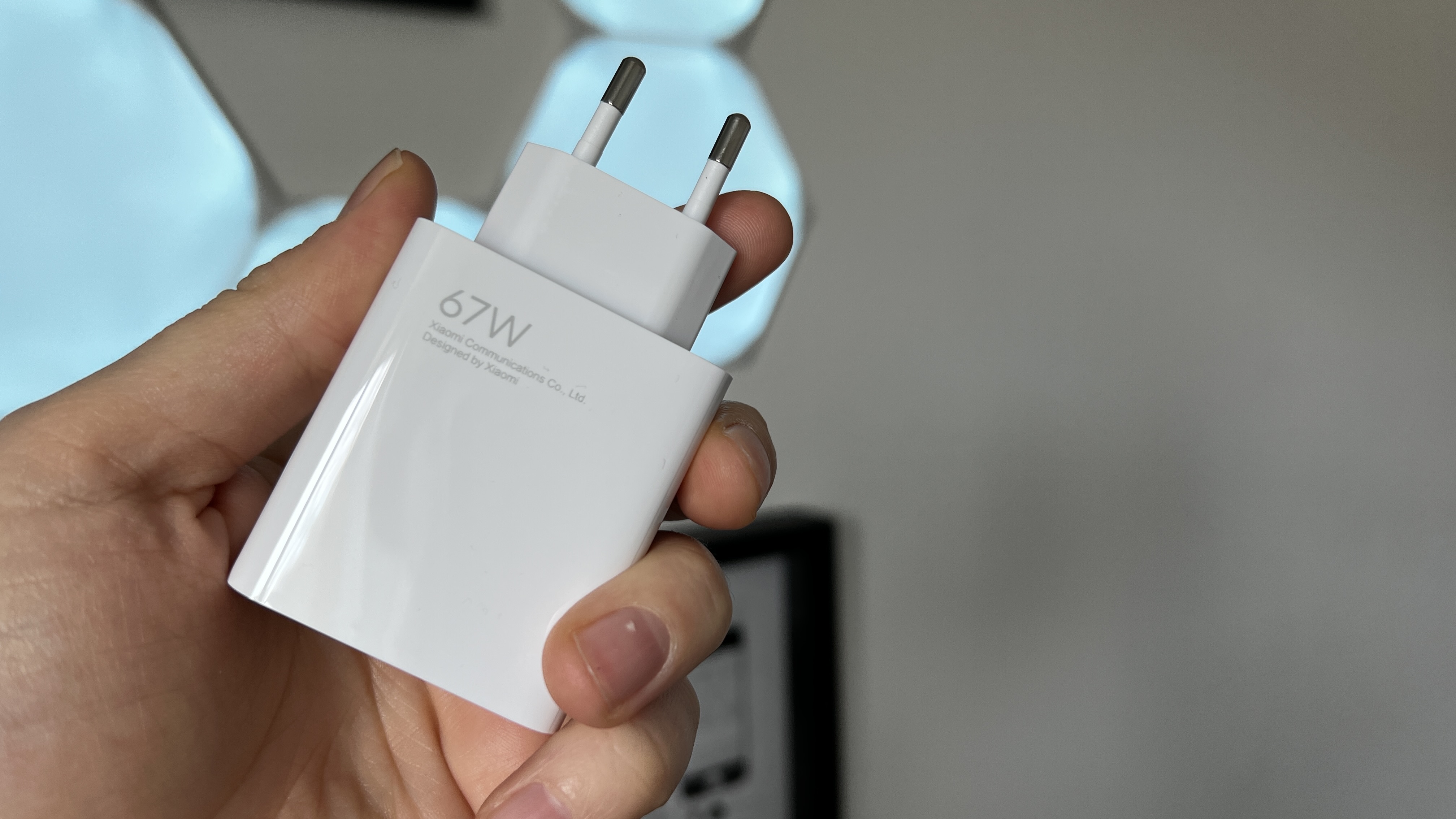
Luckily, the 67W wired charging or 50W wireless turbo charging support means you can juice this back up to full in rapid time — charging to 100% in 32 minutes in my own testing.
Plus, as just mentioned, wireless charging is now part of the package, which makes giving this a quick boost so much more convenient and catches it back up with the iPhone 13 and Galaxy S22.
Xiaomi 12: Cameras
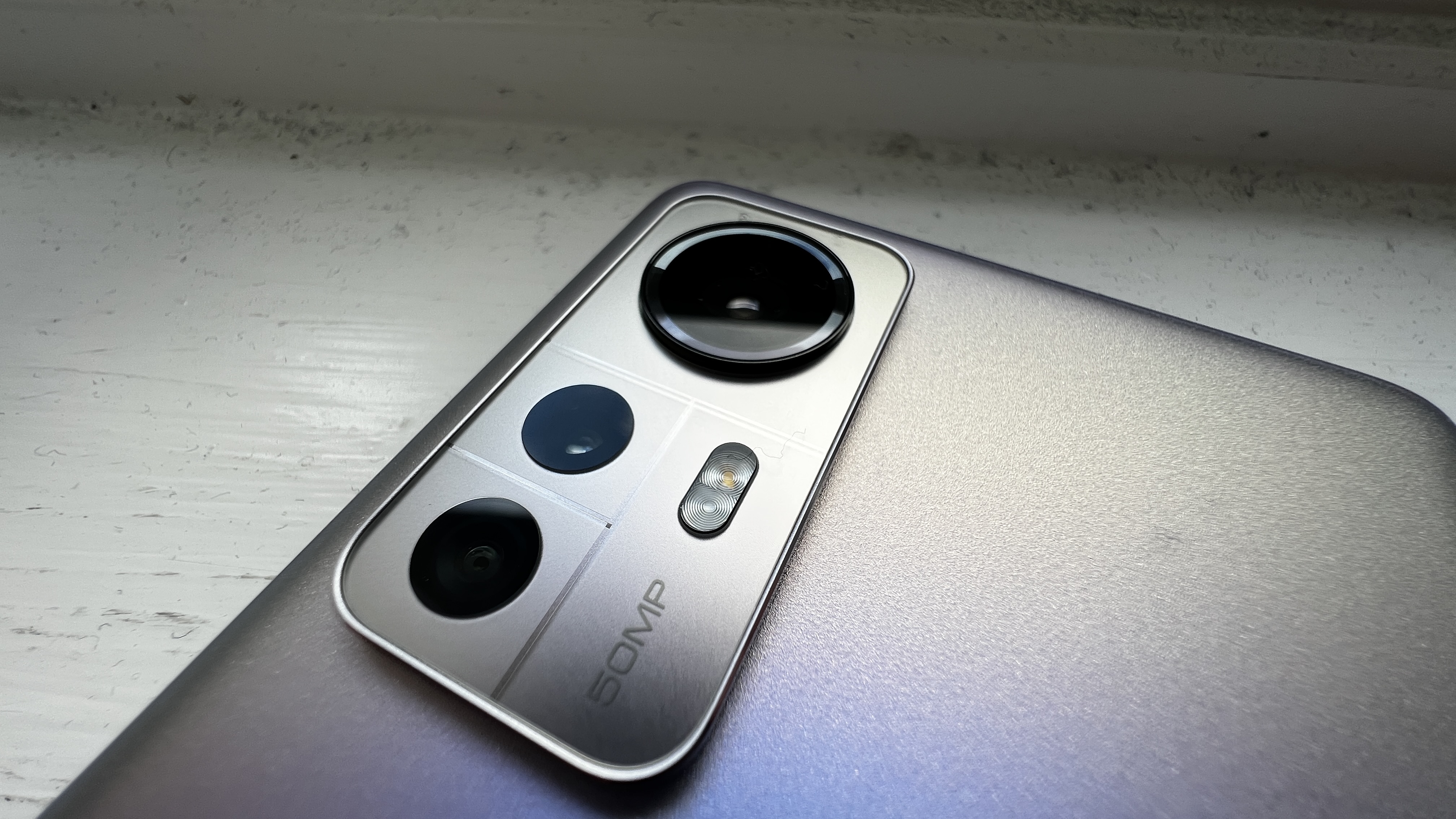
Xiaomi’s camera systems have been a mixed bag, all the way up to the 11T Pro, which was highly bragged about but didn’t match up to the hype. With the Xiaomi 12, however, the company has got it right.
Round back, you’ll find a 50MP main shooter with f/1.88 aperture, a 13MP ultra-wide with f/2.4 and a 5MP tele macro lens with a 50mm focal length. Up front, there’s a 32MP hole-punch selfie snapper with f/2.45 aperture.
Let’s start on the front. The 4-in-1 pixel binning leads to a sharp picture, which pairs with the improved color science and impressive contrast. There are AI smoothing options, but I kept these off as the camera is better off without them.

As for the back, the main shooter with a 6-element lens and the same 4-in-1 binning produces great pictures. Colors are accurate, the contrast ratio provides a nice personality to your photography, and the Xiaomi ProFocus is a real game changer for motion tracking that managed to get even the fastest moving pro wrestlers with a sharp crispness that my iPhone 13 just wasn’t able to do — even at night.
Meanwhile, the ultra wide provides a helluva lot more detail than previous Xiaomi phones and while the image warping exists at the edges, none of it takes a hit on the definition. Finally, the tele macro is fine for the casual macro photography experiment, but does artifact heavily when used for its telephoto capabilities.




As for videography, the capability of capturing up to 8K video is nice to have (but seriously, who shoots in 8K on their phone?), along with a slew of creative features including macro video, audio zoom, object tracking, and optical image stabilization for a shake-free picture quality.
Compared to the competition, Samsung’s hyperreal color science is something you won’t find here and the iPhone 13’s video capabilities are well known as the best in the smartphone game. The Xiaomi 12 fits nicely in the middle of these as a decent option that does it all.
Xiaomi 12: MIUI
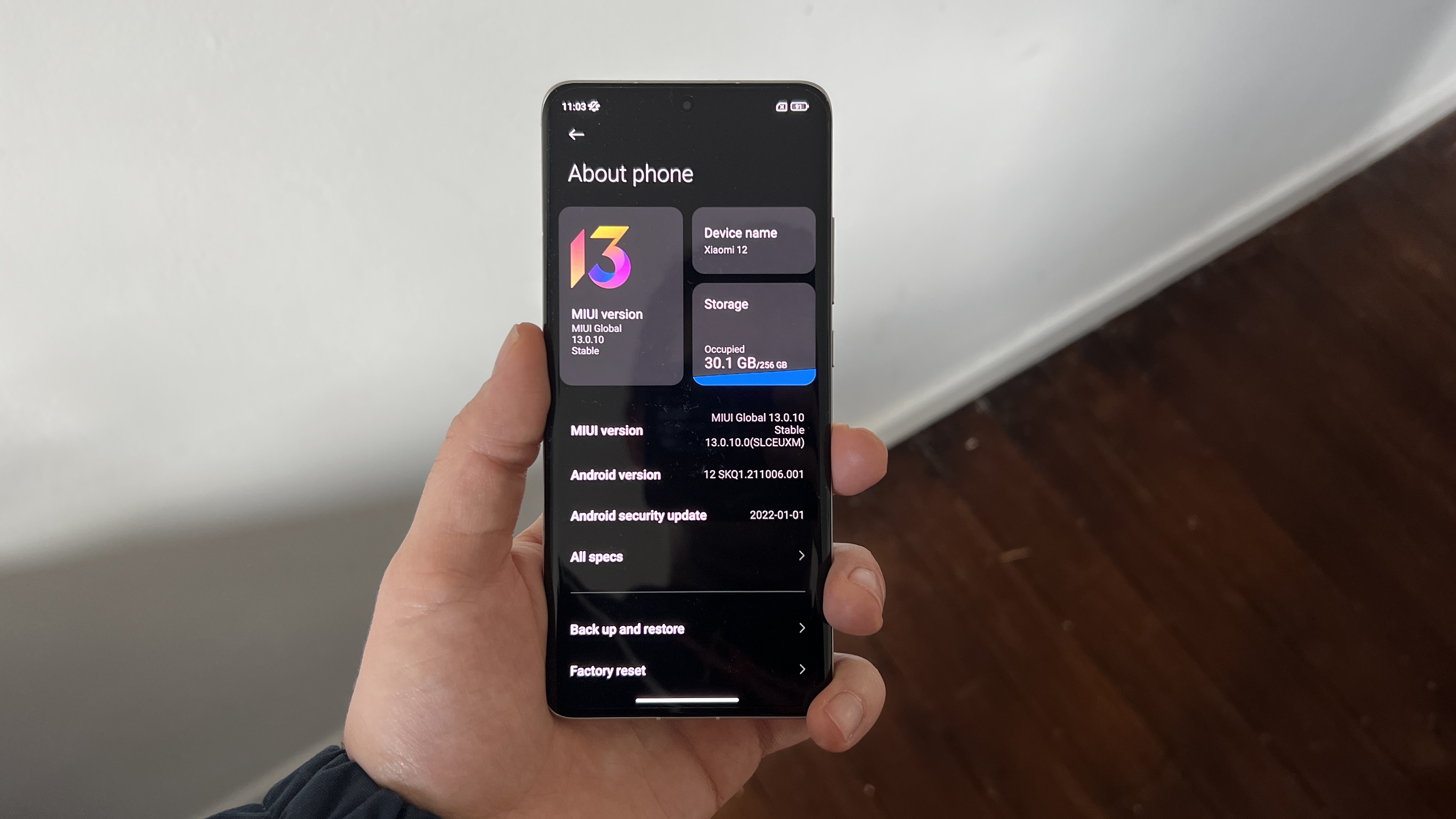
Xiaomi’s MIUI on top of Android 12 continues to feel busy, at a time when OEMs need to give us something cleaner. Though the company has chilled out on the pre-loaded apps, we still have the wallpaper carousel that is equal parts StumbleUpon and a lock screen.
Of course, there are some neat user-friendly features too, such as the control center-esque swipe down, the security scan is now less in-your-face than on the 11T Pro, and the home screen customization suite is impressively comprehensive.
And not only that, but Xiaomi is committing to three major Android updates and four years of security updates. That offers decent longevity, but is one year less than the Galaxy S22 and falls short of the roughly 6+ years of iOS support you’ll find for the iPhone 13.
Xiaomi 12: Verdict
So, does the Xiaomi 12 deliver on being the everyday flagship? Almost.
This is a great smartphone: the screen is gorgeous, it’s wicked fast, looks great, charges fast (and wirelessly) and has a nice camera system, too. It does come with some problems though, like the battery life, the curved display over a flat panel, the busy MIUI skin and the tendency to overheat under strenuous pressure.
But for most users, these issues can be looked past in what is a brilliant Android blower that does it all at a competitive price.

Jason brought a decade of tech and gaming journalism experience to his role as a writer at Laptop Mag, and he is now the Managing Editor of Computing at Tom's Guide. He takes a particular interest in writing articles and creating videos about laptops, headphones and games. He has previously written for Kotaku, Stuff and BBC Science Focus. In his spare time, you'll find Jason looking for good dogs to pet or thinking about eating pizza if he isn't already.

